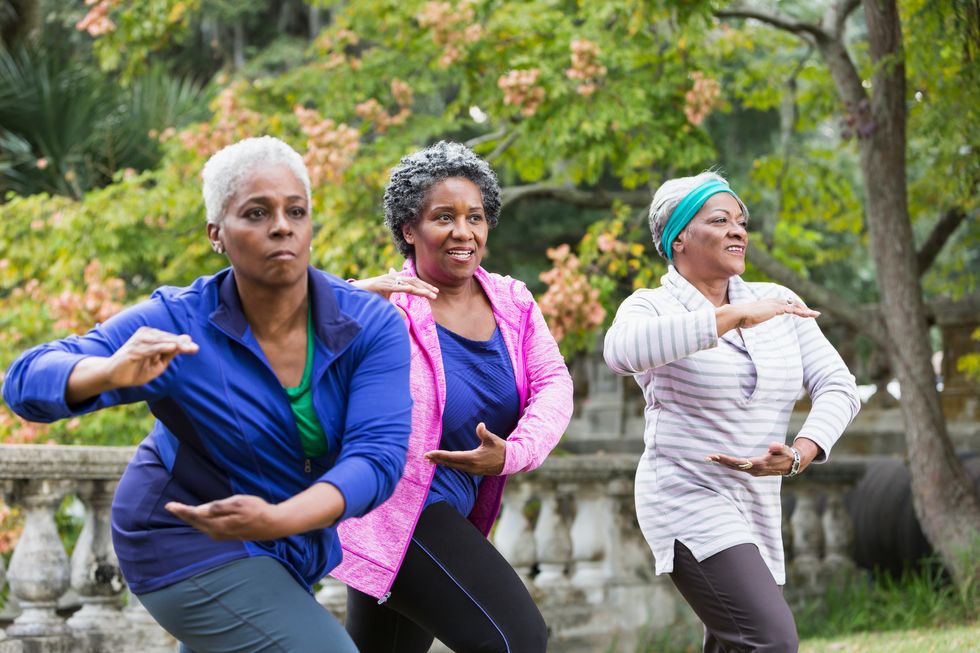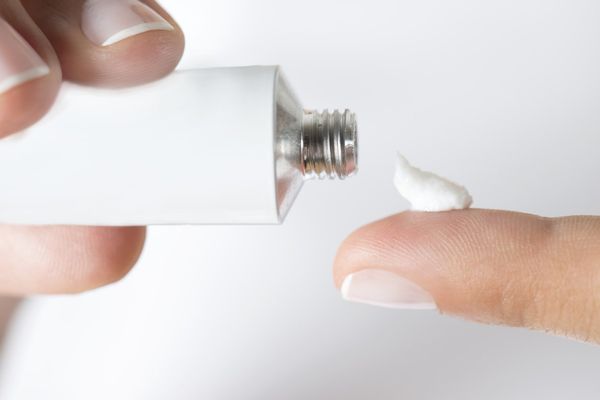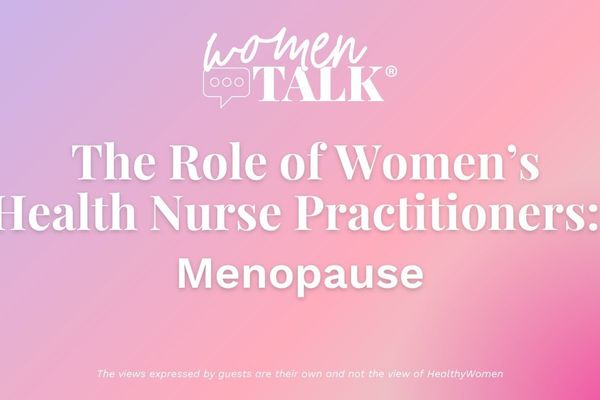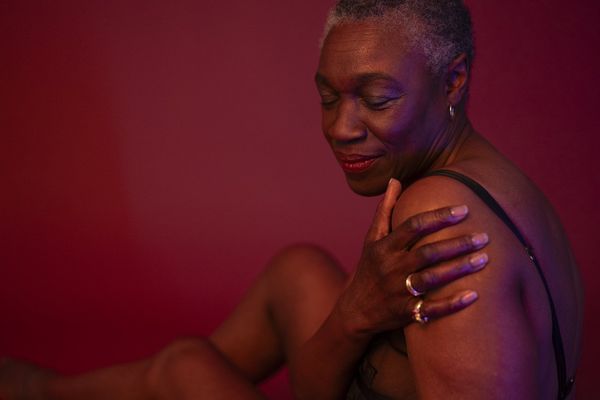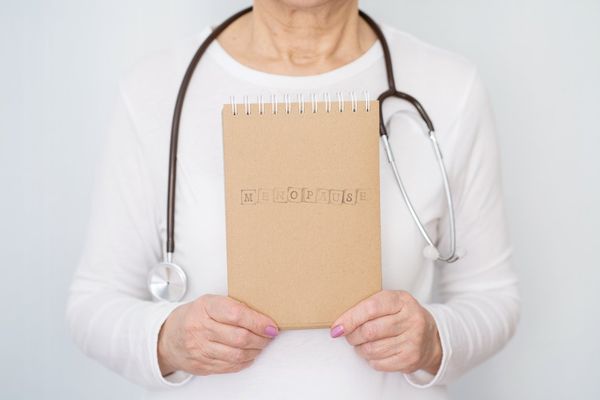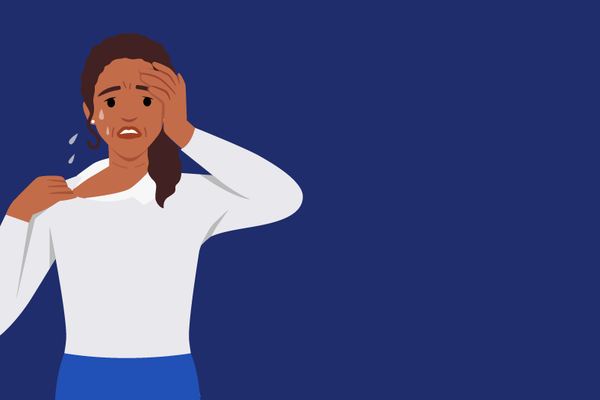In previous posts, we discussed why menopausal weight gain is such a game-changer, and we explored how to limit the damage through dietary changes. Now, we'll talk about the second critical key for maintaining—or regaining—a healthy weight after menopause.
You know what I'm gonna say.
Exercise. Not only does a regular exercise regimen help you burn more calories, which is what weight loss is all about, but it can also give you a higher quality of life and actually stave off illness.
Longitudinal studies have found that people who are more fit at midlife have lower levels of chronic illnesses, such as heart failure, diabetes, Alzheimer's disease and colon and lung cancers, as they age. Although other factors, such as heredity, play a role, in general, higher fitness levels were strongly linked with lower rates of major chronic illnesses.
"Compression of morbidity" is when debilitating illness doesn't happen until close to the end of life—and people with healthy, active lifestyles tend to have compression of morbidity.
How's that for paybacks?
I can tell you from personal experience that a regular, moderately challenging exercise regimen relieves stress, helps you sleep better, reduces the "aches and pains" associated with aging and helps you to keep up with normal activities of daily life. It regulates your bowels and your moods. And simply feeling stronger and more capable physically helps you feel more capable and in control of your life generally.
However, I will also say that maintaining a serious (and by serious, I mean regular and moderately challenging) exercise regimen is not easy. It takes time and self-discipline. It makes you sweat. It makes you breathless, and it might make you sore.
Not only that, you have to approach exercise differently in your golden years than you did before. You won't be able to just take off running without a serious warm-up; you'll have to watch your form more carefully; and you'll want to opt for low-impact exercise.
Your postmenopausal exercise regimen should contain four elements:
- Cardio. This is the aerobic stuff that gets your heart rate up, like walking fast enough that you can talk but not sing (about 3.5 mph, which I find I can do with practice and conditioning), biking, swimming and dancing. Unless you know your joints can take it, stick with low-impact aerobics. The Centers for Disease Control and Prevention (CDC) recommends two-and-a-half hours of moderately strenuous aerobic exercise per week. Lately, high-intensity interval training (HIIT) is recommended to increase the effectiveness of an aerobic workout. In this regimen you alternate bursts of higher activity, such as jogging, with a less active period, such as walking. This gives you an "afterburner" effect in which your muscles continue to burn oxygen after the period of high activity. This AARP article has a good explanation of the benefits of HIIT.
- Strength (resistance) training. This helps you maintain muscle strength. (Remember that you lose at least 20 percent of muscle mass as you age.) You can use weights or resistance bands, body weight or exercise machines. The CDC recommends weight training 2 days per week.
- Flexibility. Stretching and toning exercises maintain your range-of-motion and keep your tendons healthy and your joints juicy. Don't bounce or jerk while stretching. Hold positions for at least 30 seconds and don't stretch to the point of pain. It's a good practice to stretch after your regular workout. Here's a simple stretching routine from the Mayo Clinic. Yoga is fabulous for maintaining flexibility and relieving stress. (Listen to our podcast on this topic here.) It also counts as strength training, so consider joining a class once or twice a week.
- Balance. Balance is another capacity that diminishes with age, but it's important to maintain because injury from falls is common and serious. Tai chi is a great discipline to improve balance, but so are simple exercises, such as standing on one foot, unassisted, for 10 seconds or standing first on tiptoe and then heels—simple exercises you can do every day.
Arguably, the hardest part about exercise is getting started. If you have any health conditions that might limit your activity, such as high blood pressure or arthritis, you need to talk with your health care provider about what exercises you should and shouldn't do.
If this isn't practical or possible for you, you might turn to the internet for videos and programs. You want substance, knowledgeable leaders and safety, not razzle-dazzle. Try Fitness Blender (free workout videos and programs for all levels of fitness), Daily Burn ($20/month; variety of workouts, including yoga, tailored to age and fitness level), or Yoga Today ($15/month with a discount for yearly membership; many workouts tailored to fitness level).
The next hardest part of an exercise regimen is continuing. You will miss days; you will have days when you don't work as hard as you should. After a few missed sessions, starting again is hard. That's just how it goes. You start over; you don't quit.
Part of the battle is finding a program that works for you—one that is varied, challenging (you are progressively lifting heavier, going longer and faster), but that isn't killing you. Soreness is good; pain is bad. Move carefully without overextending or snapping joints. Always warm up and cool down.
This is your new normal: a clean diet, a daily exercise regimen that alternates weight training and aerobic exercise and incorporates stretching and balance segments.
I promise you that every ounce of effort invested in a healthy diet and regular exercise will return to you many-fold in a much higher quality of life now and in lower risk of chronic illness down the road. Let me know how it goes and send me any questions you may have. This stuff is too important to overlook.
Barb DePree, MD, has been a gynecologist for 30 years, specializing in menopause care for the past 10. Dr. DePree was named the Certified Menopause Practitioner of the Year in 2013 by the North American Menopause Society. The award particularly recognized the outreach, communication and education she does through MiddlesexMD, a website she founded and where this blog first appeared. She also is director of the Women's Midlife Services at Holland Hospital, Holland, Michigan.

